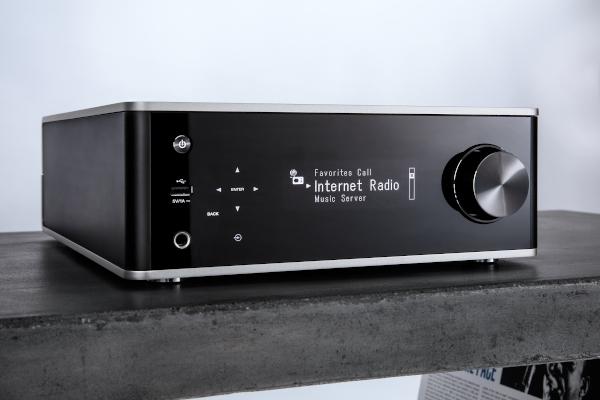What do the Denon PMA-150H, and the component in the cover photo have in common???
Denon Unveils Compact, Network-Enabled Amp

The PMA-150H ($1,099) combines a 2 x 70-watt amplifier and a versatile preamp that supports hi-res audio and wireless multiroom streaming in an 11-inch-wide enclosure featuring a large OLED screen, diamond-cut volume control, and 0.2-inch-thick aluminum top and bottom panels designed to minimize vibration.
Custom electrical components are used throughout in an amp that incorporates Denon’s “direct digital feedback amplification” and AL32 Processing Plus waveform reconstruction technology in addition to an onboard 32-bit USB-DAC built to support high-resolution 2.8/5.6-MHz DSD audio and lossless files up to 24 bits/192 kHz in resolution.
The amp supports wireless streaming via Denon’s HEOS platform, Apple’s AirPlay 2 platform, and Bluetooth in addition to providing ready access to internet radio and several music services, including Amazon Music, Spotify, Pandora, and Tidal, through the Wi-Fi-based HEOS system. The amp also supports voice control via Amazon Alexa, Apple Siri, and Google Assistant.
In addition to three digital inputs — two optical, one coaxial — and two analog RCA inputs, the PMA-150 provides an Ethernet connection, a USB-A input that supports most file formats, and a USB-B input for making a hi-res audio connection with a computer. Drawing on its expertise in receiver engineering, Denon built autosensing into the one of the optical inputs and simplified IR (infrared)-based learning so volume, mute, and input selection can be controlled via a TV’s remote control.
Rounding out the package is a dedicated headphone amplifier featuring a fully discrete final output stage and a low/medium/high impedance control for accommodating a variety of headphones. A quarter-inch headphone jack is provided on the front panel.
For more information visit usa.denon.com.
- Log in or register to post comments


I don't see a sub out port. Is there a reason for this? (The pre-out isn't really the same.)





























































